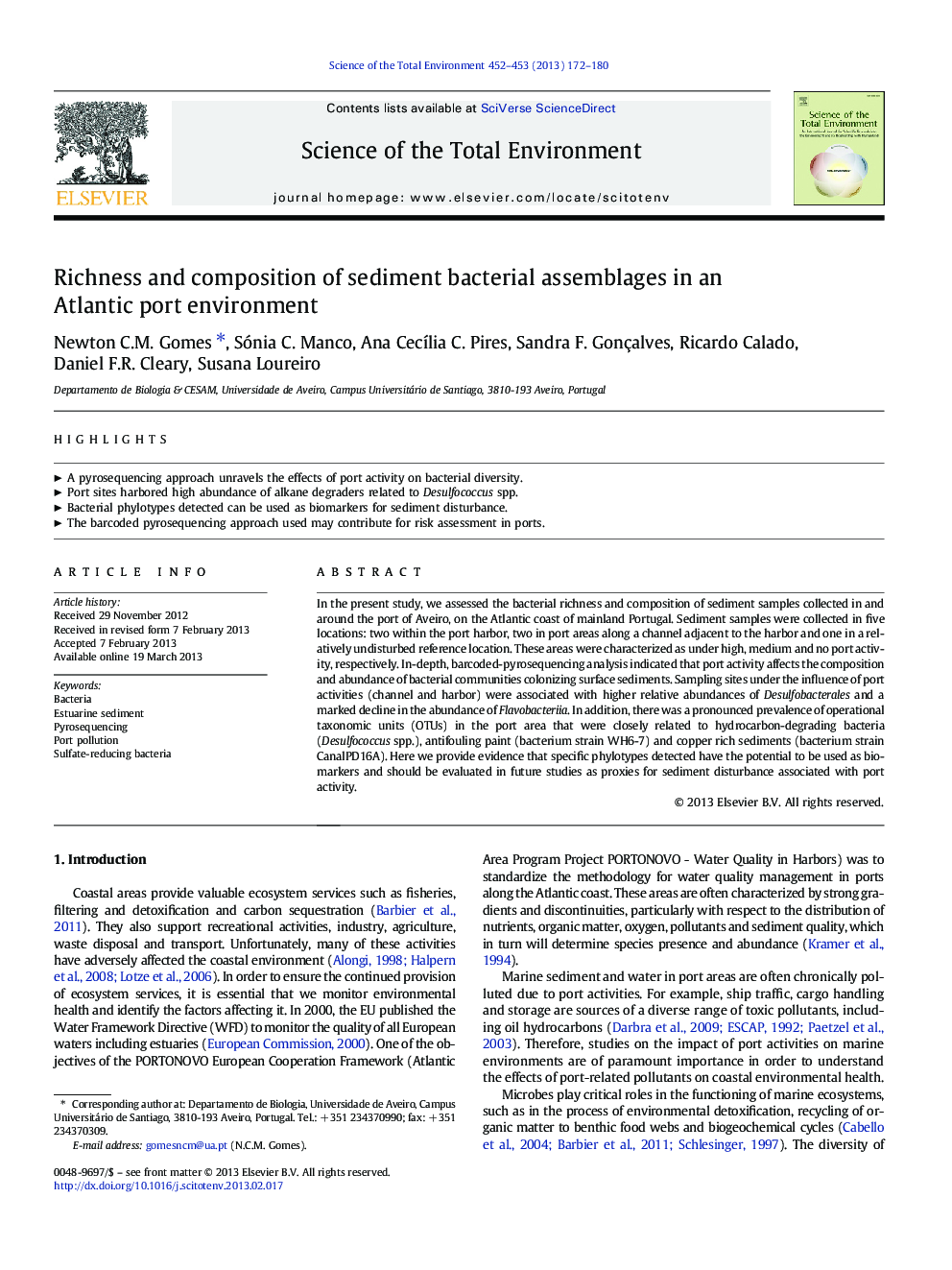| Article ID | Journal | Published Year | Pages | File Type |
|---|---|---|---|---|
| 4428752 | Science of The Total Environment | 2013 | 9 Pages |
In the present study, we assessed the bacterial richness and composition of sediment samples collected in and around the port of Aveiro, on the Atlantic coast of mainland Portugal. Sediment samples were collected in five locations: two within the port harbor, two in port areas along a channel adjacent to the harbor and one in a relatively undisturbed reference location. These areas were characterized as under high, medium and no port activity, respectively. In-depth, barcoded-pyrosequencing analysis indicated that port activity affects the composition and abundance of bacterial communities colonizing surface sediments. Sampling sites under the influence of port activities (channel and harbor) were associated with higher relative abundances of Desulfobacterales and a marked decline in the abundance of Flavobacteriia. In addition, there was a pronounced prevalence of operational taxonomic units (OTUs) in the port area that were closely related to hydrocarbon-degrading bacteria (Desulfococcus spp.), antifouling paint (bacterium strain WH6-7) and copper rich sediments (bacterium strain CanalPD16A). Here we provide evidence that specific phylotypes detected have the potential to be used as biomarkers and should be evaluated in future studies as proxies for sediment disturbance associated with port activity.
► A pyrosequencing approach unravels the effects of port activity on bacterial diversity. ► Port sites harbored high abundance of alkane degraders related to Desulfococcus spp. ► Bacterial phylotypes detected can be used as biomarkers for sediment disturbance. ► The barcoded pyrosequencing approach used may contribute for risk assessment in ports.
